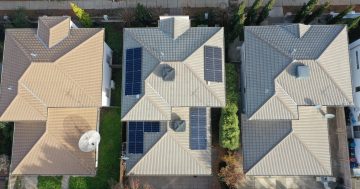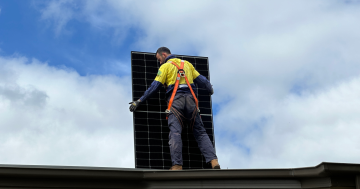
Assessing each residential site and consumer expectations is crucial to determining the ideal home solar system. Photo: Mondiaux Solar.
So you’ve made a decision help the environment, make the world a better place to live for future generation and to reduce your carbon footprint, which is great.
One of the first steps many people take to reduce their reliance on fossil fuels is choosing to install a rooftop solar system.
But before you look around for the best solar companies or installers, the first question should be about the size of the system you want and how many solar panels will you need to power your house?
Answering this question is key to optimising the benefits of solar electricity generation and getting the best system for your circumstances.
Factors that affect the size of your solar system are budget, expected savings, the amount of sunshine at your residence, the direction the panels will face, and your expected consumption.
Before making any purchase, knowing your budget is a priority. It is also critical for deciding how many panels you need for your house.
However, if you reside in the ACT, you can probably aim a little higher in your residential or commercial setting thanks to myriad of government schemes, such as the recently announced sustainable household scheme, which provides zero-interest loans of between $2000 and $15,000 to eligible ACT households.
When you decide to get a solar system for your home, you also need to answer other crucial questions.
What is your saving expectation from your system? Are you looking for something that will help you cut your electricity cost? Do you want your electricity costs just to become neutral? Do you want to earn credits from your power supplier?
What you want from your system will help you decide which one will suit your needs. If you wish to become self-sufficient in your energy needs, you must use more panels. If you want to cover only your peak hour needs, the size can be smaller.
You can calculate your savings here.

Depending on your electricity needs, batteries are now making economic sense as more rebates become available. Photo: Mondiaux Solar.
In the same way humans can’t thrive without oxygen, a solar system is ineffectual without sunshine. This makes your geographic location an important factor in determining the benefits of a solar system.
The amount of energy that a system will produce is directly related to the daily sunlight it draws. Any location acquiring sunlight with four peak sun hours is regarded as ideal. Luckily in Canberra, our rooftops receive an average of 4.8 hours of sun per day, making it a great location for solar panel installation.
The amount of sunlight exposure varies throughout the seasons, and the less sunshine you get in winter may require more panels, depending on your expectations.
Just like the geographical location, the direction the panels face is also crucial. The correct facing direction will increase the output of the panels. In most places in Australia, north-facing panels will produce the best outcome.
East-facing panels produce more solar energy in the morning, and west-facing panels are best in the afternoon. South-facing panels produce the least amount of solar energy.
How many panels your house needs will take into account the direction the panels will face. If a north-facing direction is not available, then west or east are preferred. And if none of the three are available due to the house’s unique position that produces a shade in other directions, then south is fine, but more panels are required in the directions where efficiency is low.

A well designed solar panel system will take into account your site, expectations and budget. Photo: Mondiaux Solar.
The next step in working out how many panels required for your system is how much electricity your household consumes. You can find this on your electricity bill.
Each kilowatt of solar makes 4-4.5 kWh per day. You will need to divide your daily consumption by this amount to calculate the size of the system you will require.
There is another way to check the system size. The average system consumption is divided by standard panel production, and the result is equal to the number of panels required at your home.
You can use either of these formulas to check the number of panels you require.
Once you have worked out your budget, and what you want from your new solar system – taking into account site direction and your consumption – you will be ready to look at companies and installers.
Panels with extended warranties are the most reliable and will provide you with significant profits in the future. You should research the market to find the best companies for installation.
If you’re in the ACT or NSW – from Kiama to Eden – Mondiaux Solar will help you answer all these questions.
Visit Mondiaux Solar for more information.





















